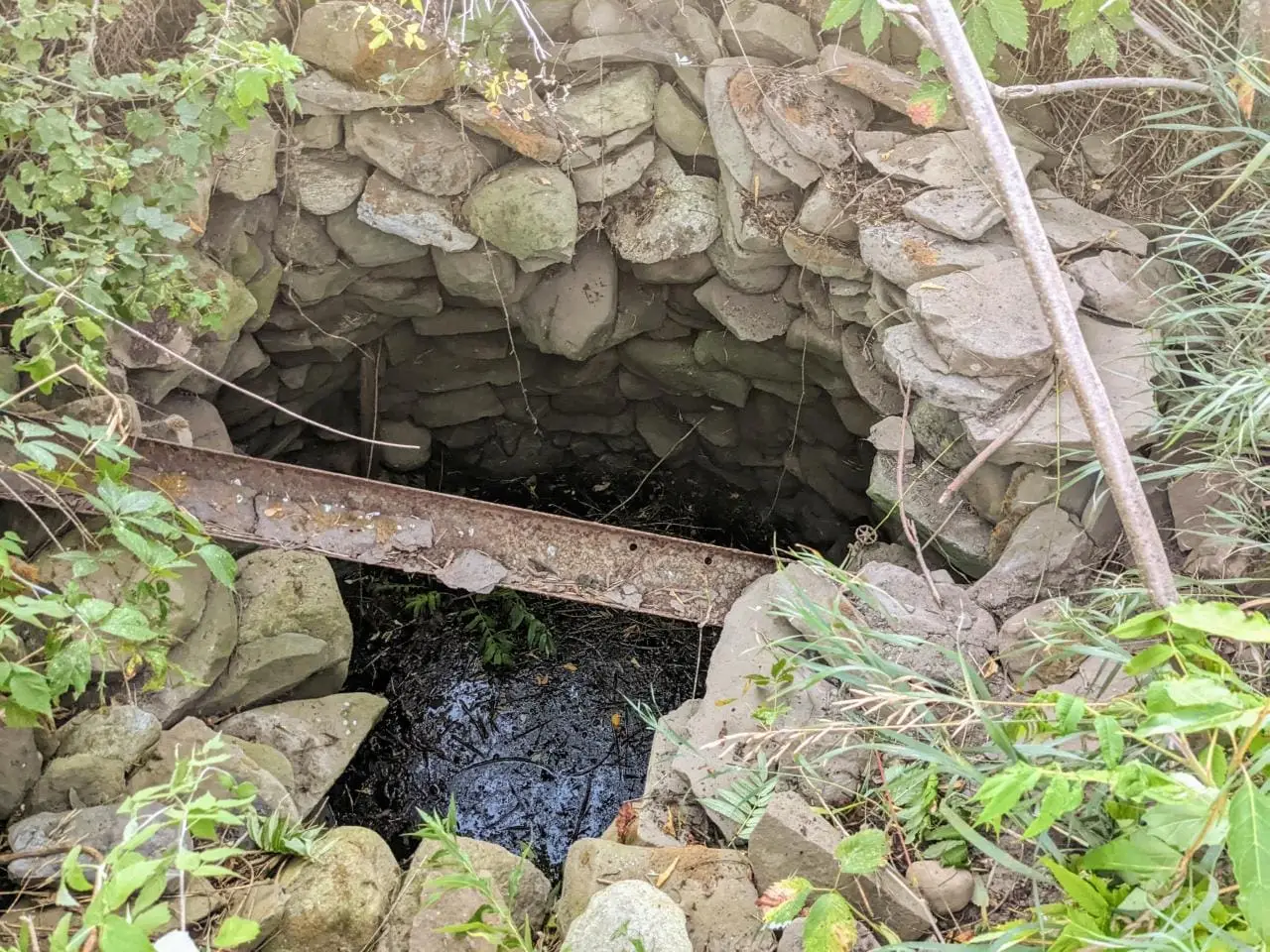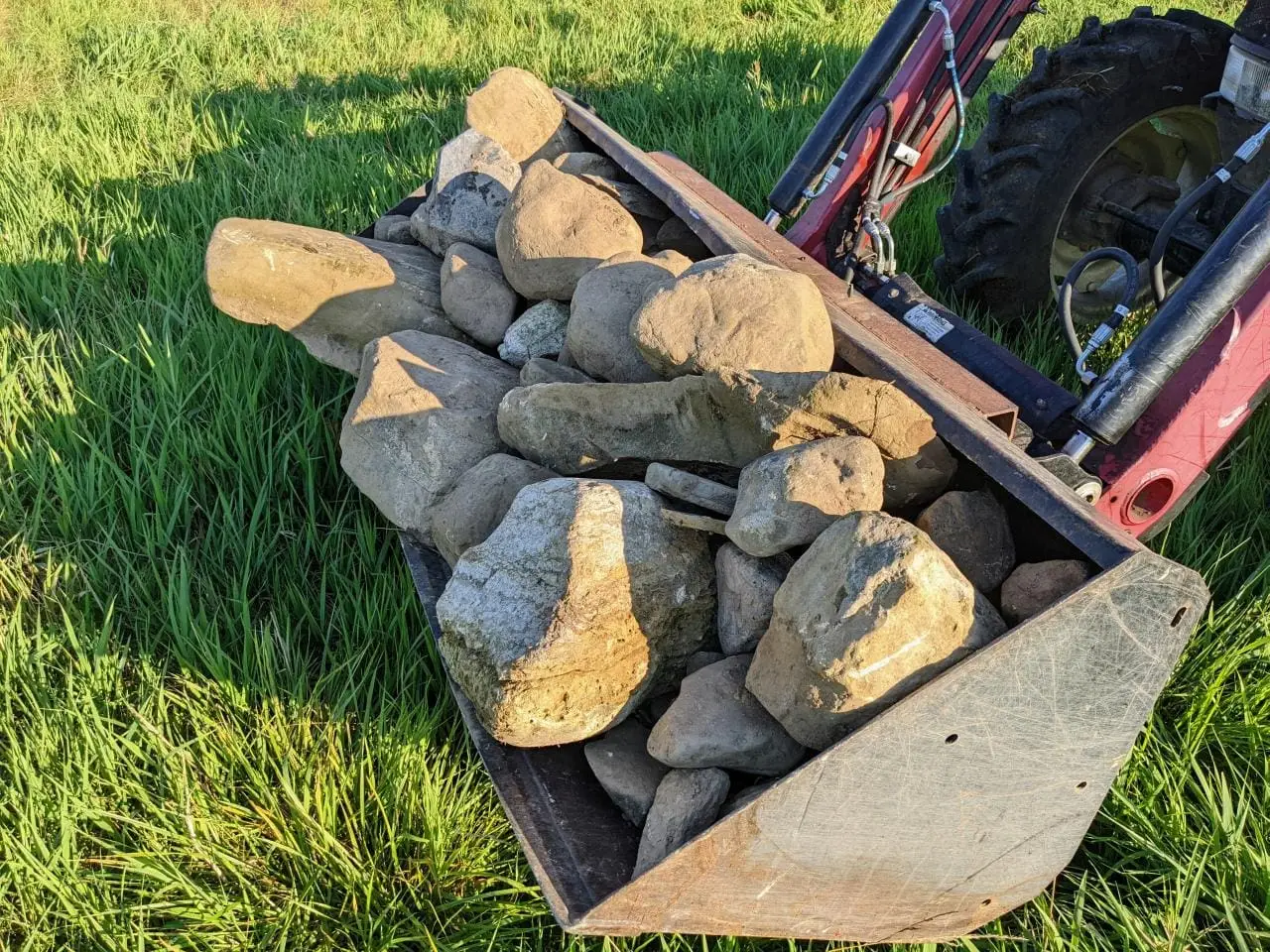Whenever I’m involved in a project of deconstruction, I feel a pang of sympathy for the folks who originally put in all that effort to bring something new into the world. Whether I’m prying rotted boards off a building or removing brittle, rusty old barbed wire from fenceline, I know a sense of connection to the unknown person who was here, doing a job of work. And I wonder about their circumstances. Was it one person, or a team? What tools did they have? Did they use horses? Was it a summer day with sweat dripping, or a winter day with noses dripping?
This farm has several old hand-dug wells and springs. When we first moved here, I had a close call, nearly falling into one well while hacking my way through a field overgrown in sumacs and wild grapevines. It was an uncovered pit, concealed by weeds and brush, just waiting for me. This well originally piped water into the barn, serving it along with two other wells up at the top of the hill.

I decided that it was time to fill in that exposed well. For the past ten years I’ve had it fenced off and capped with some salvaged cutoff material from a large water tank to prevent cattle or children from falling in. But gaps were beginning to open around the edges of my improvised cover. The sides were buckling as tree roots jostled the stones near the surface. The land was in the process of reclaiming it, in it’s ineluctable yet haphazard fashion.
But I felt a reluctance to destroy this well because I could imagine the tremendous amount of work that went into digging and dry-stoning it. Losing the well was a loss of the history of someone’s effort in this place. And so it took a long time finally to come to the decision that it would be best to close it permanently.
To fill in the well, I spent a few days gathering stones from the pastures. If there is one resource for which we’re never limited, that would have to be stones. We uncover a new batch of rocks anywhere we scratch the soil. We have abundant limestone and a little shale from our native bedrock, mixed in with granite scattered from glacial till. So I went about the job, load after load, lifting, rolling, heaving on pry bars, and occasionally stopping to shake life into stunned, smashed fingers.

I’m glad the job is almost done. The well is filled with stones. I’m waiting a few weeks to see if the stones will shift or settle. Then I’ll cap it off with a thick layer of topsoil. The fill will continue to consolidate over the next couple of years as the water table rises and falls and as frosts heave stones about, so I’ll likely need to topdress soil in any depressions that develops.
Years from now, with the grass grown over it, this will just be an unremarkable part of the pasture. Maybe somebody in the future will think, “You know, this would be a great spot to dig a well.” What a surprise they’ll get when they try to hack their way into this pile of rocks…
